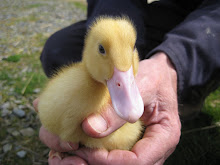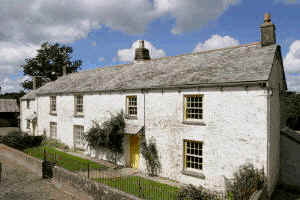 I have deliberately avoided posting about badgers for a very long time; their mention generates such strong feelings for both conservation and culling, especially here in Devon, which is a TB hotspot.
I have deliberately avoided posting about badgers for a very long time; their mention generates such strong feelings for both conservation and culling, especially here in Devon, which is a TB hotspot.The case against the badger being the source of infection for TB in cattle is continually proved and disproved. To a non-scientist this is a very live case of bad science . Would I be naive in imagining that politics and self-interest groups were badly interfering with independent, rigorous research here? Why is the answer so difficult to ascertain? Meanwhile cattle farmers live with the very real consequences of TB, and others flinch at the prospect of a potentially unwarranted cull.
There is an active badger sett on the farm. It sits in a remote spot, and the inhabitants quarry huge amounts of stone and shingle to continuously improve their home. They are fearsomely strong and persistent animals; no fence I know of can keep them in or out, so you don't even try. The entrance holes to the sett are big enough to swallow a toddler or a rugby player's thigh, and a few yards away you'll find used bedding, dry grasses for the most part, turfed out regularly. When the ground is soft the impression made by their claws requires respect, and you really don't want your dogs to meet them snout to snout.
Their overactive toileting habits have always made me chuckle; they dig shallow scrapes a short distance away from the sett which they then proceed to fill beyond the brim. In the autumn these mounds are full of plum, damson and sloe stones.
It is the beauty and strangeness of the badger which is so appealing. They remind me of the tapir, a particular favourite from a time when I drove past some every day on the way to work (pdf), even though they are not odd-toed ungulates and therefore in a completely different category. Even so, both have the camel-like association of being an animal designed by committee. The badger's markings are as extraordinary as a zebra's stripes and they beetle about in an inelegant and apparently casual manner that belies their natural sense for self preservation, although I suspect their poor eyesight has something to do with that.
I have tripped over badger cubs in the middle of the day, seen Mopsa pounce on a moving heap of leaves to reveal not the mouse we were both expecting but a young badger who moved swiftly off the scene, and heard badgers fighting at night - the most ferocious sound.
I can't help but hope that the badgers here are free from both TB and legislative danger.

















9 comments:
Nice post, Mopsa.
Good one Mopsa - yes tehre is something fascinating about badgers. And as portrayed in Wind inthe Willows, I think we tend to be kindly disposed towards them. I am anyway.
The problem is that they look too sweet to be suspected as villains and their eyesight qualifies them to be disabled, surely? As Flowerpot says, dear old Badger in W of the Ws ensures our sympathy from an early age.
I enjoyed reading your thoughts on badgers. They don't seem to live in Lancashire and Bill Oddie only shows them in grey..
Good post, Mopsa. Well thought out, balanced and nicely expressed.
I, too, hope the badgers are spared, though I'm not holding my breath.
It would be good if the scientists could find something fantastic that badgers do to preserve the countryside and enhance farming, so even if they do pass on TB, some alternative solution becomes viable.
I don’t think it’s the case of the badger being or not being a source of infection that’s in dispute. It’s known, without a doubt, that badgers are affected by TB, and bTB at that, so are hedgehogs, deer, pigs, cats and dogs, South American camelids and goats. It’s also known that infection is passed between cattle and badgers. What isn’t known is who the original perpetrator was - but that’s kind of irrelevant now.
The rub is that even though the large pool of infection in the wild is accepted, nothing is done about it, whilst cattle are being culled in their thousands and severe movement restrictions applied . Hope in the form of a suitable vaccine is light years away.
The dispute is in the ‘cull’ or ‘not to cull’ camps – both showing so called hard evidence for their case.
I like badgers and I like cattle (also deer, pigs, cats and dogs, camelids and goats). I also have several active badger setts on the farm, which presumably have healthy badgers residing in them as my herd has gone clear for many years – but – every year I go through increased hell waiting for test results. I’m not complacent. Most of my surrounding neighbours are shut down with bTB. And when (notice I say 'when' and not 'if') my heard suffers a breakdown…? How will I feel then?
We visited my husband's parents in Devon right after my son was born 3 years ago, and we used to walk the hills and there were HUGE badger holes everywhere. Scared the crap out of me! All I could see in my mind were those angry badgers you see flying at the camera on nature shows. he he.
Very emotive subject as you say. We knew a farmer who cursed the ones on his land - mostly because of their major sett building activities. He did however let them alone as they didn't cause his cattle any harm. Were he to get rid of them he reckoned, TB carriers might move in in their place. Better the devil you know.
We have badgers adjacent to us too - and I'm quite pleased that they're there.
I hoped this would generate a host of comments and it has.
In contemplating having cattle here, my biggest worry is TB and its effects on the animals (premature death) and on me (nerves and stress). Paula's comments have brought that into focus most graphically.
Post a Comment